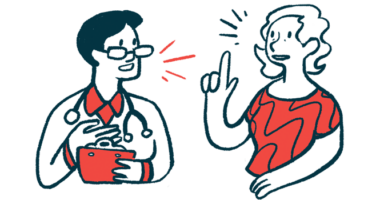The Use of 6 Warning Signs May Aid in Improving C1-INH-HAE Diagnosis

Six warning signs were present in a group of patients with hereditary angioedema (HAE) due to a deficiency in C1-inhibitor (C1-INH), as reported in a recent study from Brazil.
Dubbed H4AE to assist in recalling, the warning signs are hereditary (H), recurrent angioedema (A), abdominal pain (A), absence of urticaria (A), absence of response to antihistamines (A), and estrogen association (E), all of which had already been put forward in the 2011 Brazilian Hereditary Angioedema Guidelines.
“The warning signs … may be useful in raising awareness and improving the diagnosis of C1-INH-HAE,” the researchers wrote.
The study, “Clinical features of hereditary angioedema and warning signs (H4AE) for its identification,” was published in Clinics.
As a mnemonic strategy, the researchers suggested the use of HAAAAE, or H4AE, to help retain memory of the six HAE warning signs.
Two types of HAE (types 1 and 2) are caused by mutations in SERPING1, a gene that carries instructions for making a protein called C1-INH in the blood. The mutations result in the protein either being faulty or not produced at all.
When C1-INH is defective or missing, it causes episodes of sudden, but temporary, swelling that usually appears on its own, without hives or a rash. Swelling occurs in the deeper layers of the skin, especially in the hands, feet, and face, and also in the airways and the bowel.
There is often a delay in diagnosing HAE, which increases the risk of complications, particularly those that arise from swelling in the airways and the bowel.
“HAE patients visit several physicians before receiving a correct diagnosis, and many of them are misdiagnosed,” the researchers wrote.
They wanted to see whether a defined set of warning signs could help diagnose HAE earlier.
The study assessed the medical records of 98 patients (66 women and 32 men) from January 2010 to December 2020. They had a mean age of 38.1, and 75.3% had a family history of HAE.
The patients’ mean age was 12.7 at the time they had their first symptoms, and the mean time to reach a diagnosis was 13.7 years. Women received their diagnosis a mean of 5.7 years later than men.
Before starting treatment, patients had an average of 11.3 attacks per year that lasted a mean of 81.2 hours (more than three days). More men than women were on long-term preventive treatment (75.0% vs. 68.2%).
Swelling occurred mainly in the extremities (97.5%), face (87.8%), and the abdomen (87.6%). Spontaneous attacks were reported by 81.2% of patients and the main triggering factors reported were stress (72.2%), followed by trauma (67.5%), and dental procedures (34.8%).
“Patients denied urticaria and referred that their angioedema attacks did not improve with antihistamines, corticosteroids or epinephrine, drugs appropriate to treat histaminergic angioedema,” the researchers wrote.
Among women, 29.6% reported that the disease got worse around the time of menstruation, and 31% with taking estrogen, a hormone that may be used for birth control and for treating symptoms of menopause, osteoporosis, and other conditions.
A surgery to open up the abdomen to find the cause of problems like abdominal pain, called an exploratory laparotomy, was performed in 26.9% of the patients. Orotracheal intubation, placing a flexible tube in the trachea to keep the airways open, was needed in 21.3% of the patients.
Attacks leading to hospital admission at least once were seen in 61.3% of the patients and to the intensive care unit in 30.3%.
“The study showed the relevance of warning signs in the identification of C1-INH-HAE,” the researchers wrote.







